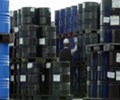

China is expected to release between 25 million to 30 million barrels from its strategic petroleum reserves in the fourth quarter of 2021 as economic growth powers ahead and inventories are drawn down in the world’s second largest oil consumer, the head of Vitol Asia said Aug. 1.
“The underlying demand is there and it is just a question how it plays out in inventories,” Mike Muller told the Gulf Intelligence webinar. “They have released oil from stockpiles. We believe that Chinese petroleum reserves will see a draw of 25-30 million barrels of oil in the fourth quarter of this year, which at some point needs to be replenished because the economy is still growing.”
The drawdown in strategic reserves may crimp spot market oil prices in the short-term but will be bullish in the long-term, he said.
“What it does is it dampens the enthusiasm of the prompt spot market in the next few months,” he said. “But in the longer run one assumes that oil needs to be put back especially if strategic petroleum reserves are being held for the strategic reasons. China growth is irrepressible, and it will continue to point north and that will manifest itself in stock draws and ultimately in stronger demand.”
H1 oil imports
China’s crude oil imports in the first half of 2021 declined for the first time in eight years, pulled down by sharp year-on-year falls in inflows in May and June, as a steep increase in international oil prices prompted importers in Asia’s biggest oil consumer to defer purchases and dip into domestic inventories instead.
The country’s crude inflows in the first half of the year fell 2.5% year on year to 10.56 million b/d, the first half-year decline in crude imports China has seen since 2013, data released July 13 by the General Administration of Customs showed.
According to data intelligence firm Kpler, China’s crude inventories fell to a 14-month low of 879.46 million barrels in June.
But analysts and industry officials expect China’s oil imports in the second half of the year to recover and bring overall growth for the year, amid expectations that the anticipated commissioning of new refining capacity would create incremental demand.
China’s overall imports in 2021 could grow by 1% year on year to 11 million b/d, according to estimates by S&P Global Platts Analytics.
Saudi OSPs
Saudi Aramco is unlikely to significantly raise the premium on its crudes when it releases its official selling prices for September this week, Muller said.
“Consensus is that they have been a little bit on the hawkish side because they have been able to because they wanted to mirror the fact they are withholding supply from the market,” Muller said.
“Whilst most people’s economic models predict that they can put the Arab light and Arab medium premium up by 50 cents or more, there is a view they won’t do so or ought not do so in order not to send the wrong message as more OPEC and OPEC+ oil comes to the market.”
Saudi Aramco is likely to raise its OSPs by around 50-60 cents/b for the lighter grades and by 20-30 cents/b for medium and heavy crudes, traders previously told Platts.
Saudi Aramco had raised OSPs for Asia-bound August loading crude by 80 cents/b to $1/b, compared to a 74 cents/b month-on-month jump in the Dubai cash/paper spread in June.
This time around, however, traders say OSP increases could be more measured given the OPEC+ alliance’s plan to start raising production and weak spot differentials observed in the trade for the September-loading trade cycle this month.
OPEC+ began on Aug. 1 hiking its output by 400,000 b/d per month up to December in a new deal struck on July 18, which will bring in a 2 million b/d total increase by the end of the year.
That will help relieve a market that analysts say has grown increasingly tight, with global oil demand on the rise due to seasonal factors and the world’s continued emergence from the pandemic.
Source: Platts